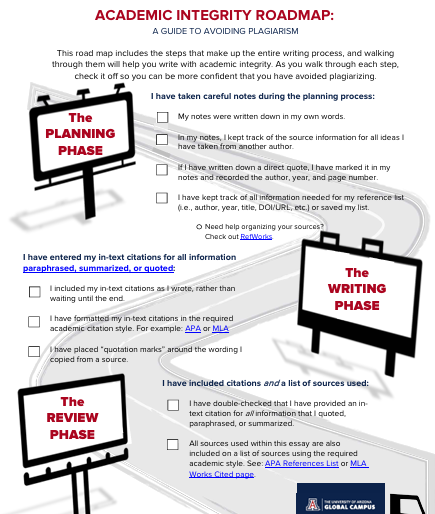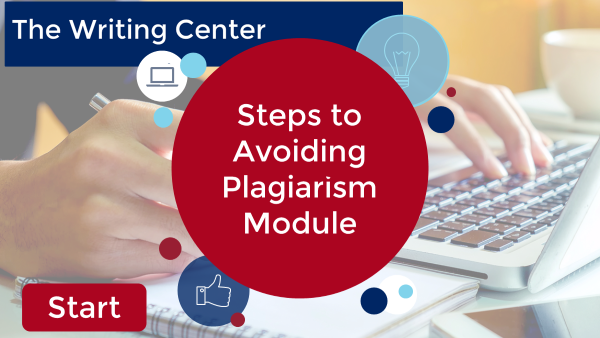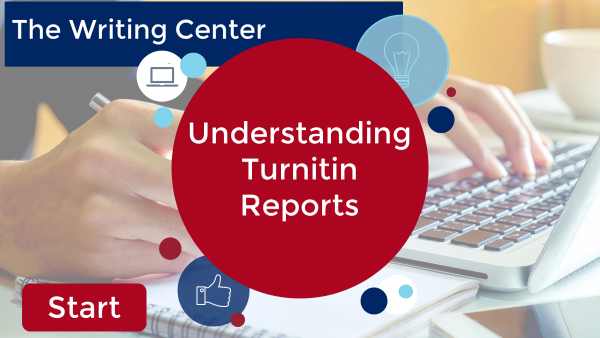Remember that plagiarism is just one of the eight areas of academic integrity. See more at the Academic Integrity Guide.
What is Plagiarism?
Plagiarism is when you take another person's words or ideas and try to pass them off as your own. This includes taking information from web pages, articles, books, blogs, or any other source, and not giving credit to the original author.
Whenever you quote, paraphrase, or summarize another person's work, you need to cite the source within your paper. It is not enough to just list the source in the References or Works Cited at the end of your paper. Failing to properly cite someone else's words and ideas at the point they show up in your paper is plagiarism.
The UAGC Catalog provides extensive details on academic integrity violations and consequences.
How Can I Ensure I am Not Plagiarizing?
- Use in-text citations (citations within the text of the paper)any time you paraphrase or quote to show where the original idea or information came from. Use the formatting style required for your assignment.
- Place quotation marks around all wording that is copied word-for-word from a source.
- Correctly paraphrase any information you obtained from a source. Remember that a paraphrase is more than just changing every few words.
- Use Turnitin (see section below).
- Do not assume generative AI provides accurate information. You must go to the original source to verify the source exists, the information is within that source, and it is an appropriate type of source to use. Always cite the original source. See Academic Uses of AI.
- Do not copy or purchase writing and present it as your own work.
- Do not reuse assignments from a previous course without your instructor’s permission.
- Do not let other students borrow, copy, or reuse your past assignment.
- Do not allow a tutor or any others to collaborate with you on completing an assignment, edit or complete any of your writing for you, summarize any of your required readings for you, or provide you with sources to use for your paper.
What about Generative AI?
Using generative AI may lead to several forms of plagiarism. Copying and pasting information from AI is a clear violation, but there are others as well. Including non-existing and unverified sources in a references list is known as falsification. Providing inaccurate or misleading information in your paper is known as misrepresentation. Both of these are academic integrity violations that can happen when attempting to gather information from generative AI without also going directly to the/a source to verify it.
There have been times when generative AI provides a reference citation to a “source” that does not exist at all or provides information from a source that is outdated and no longer accurate. This is just one reason to always go to any source that generative AI is providing. Check AI’s work yourself. You can only cite a source when you have located the information within that source yourself. And you should never cite AI as a research source. Use the original source as your research source for your paper and always cite that original source once you verify the information is in fact within that source.
If you include incorrect information provided by ChatGPT in an assignment, you will be responsible for it. See Academic Uses of AI.
What is Turnitin?
Turnitin is a tool that helps identify possible plagiarism within an assignment. This tool compares students’ work with texts available online, in our university’s internal database, as well as any assignment submitted to Turnitin. See more on our Understanding Turnitin page, which shows how to access Turnitin and how to understand a Turnitin report.
For more help avoiding plagiarism, follow the steps outlined in our Academic Integrity Roadmap.

Related Video & Interactive Tutorials
Plagarism

